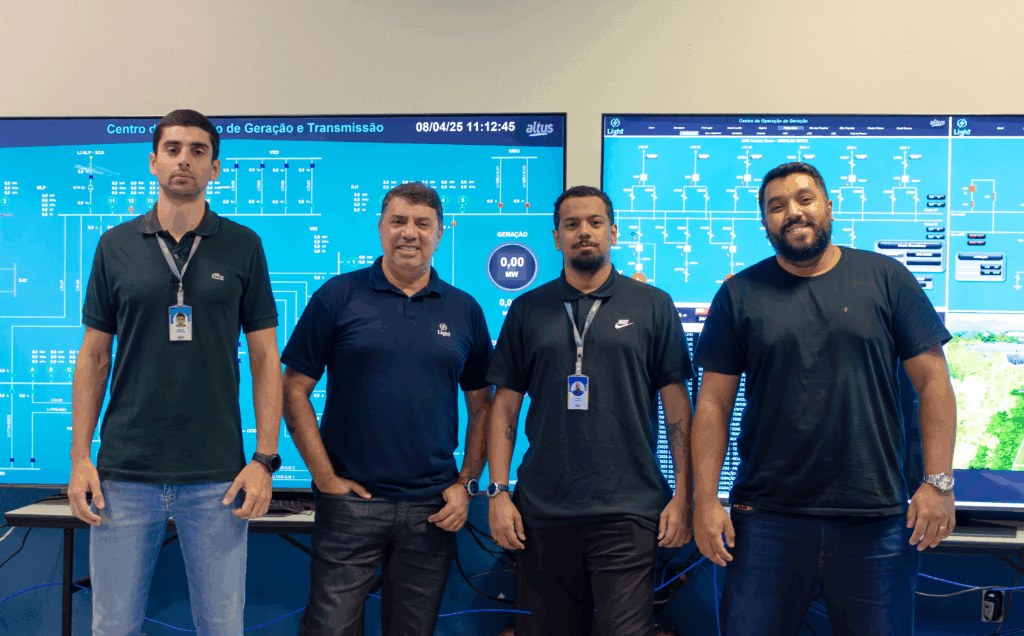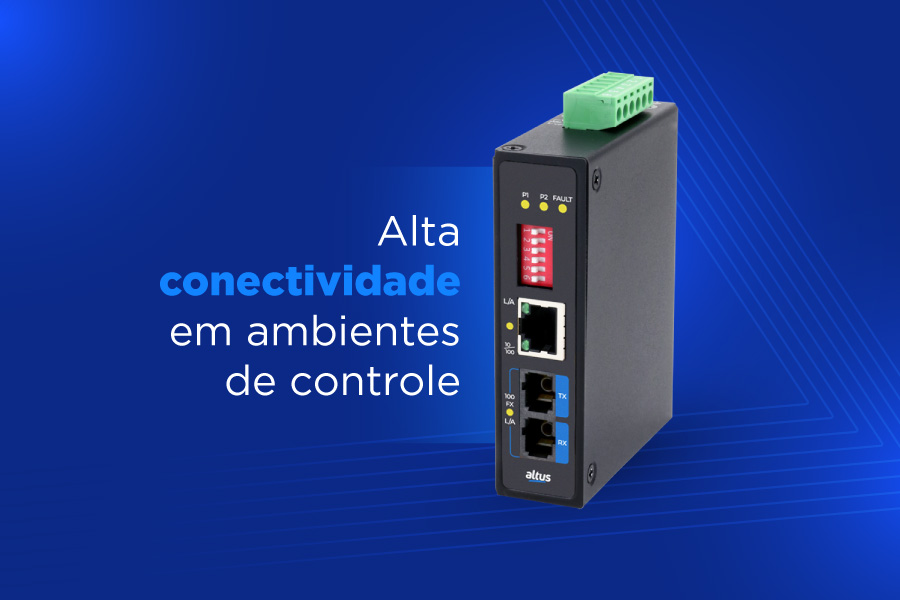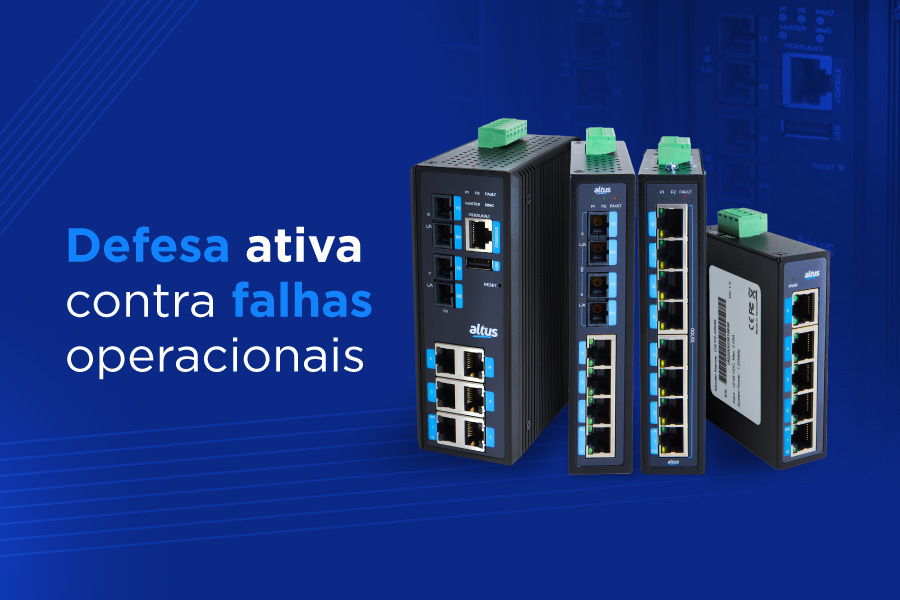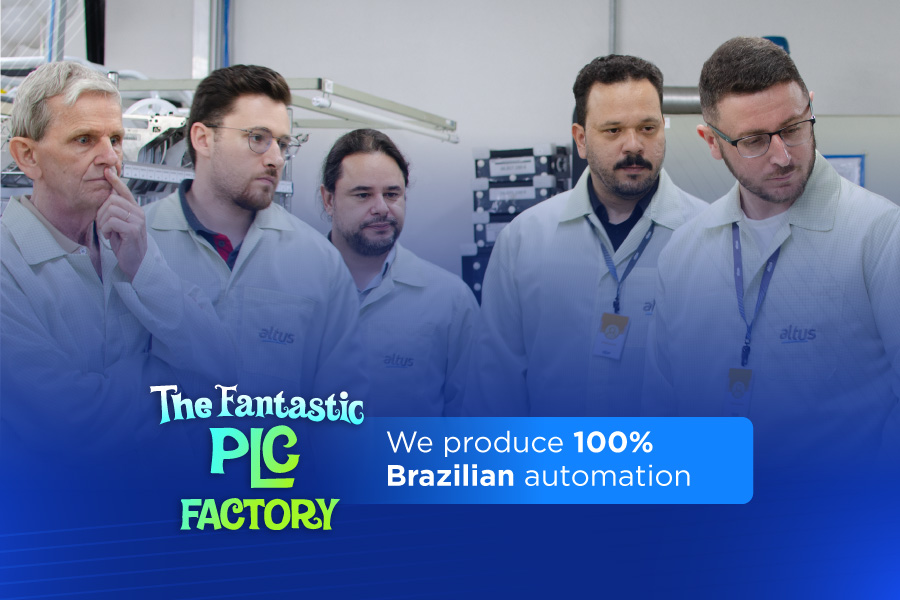In a global scenario where energy infrastructure is the engine of development and economic stability, ensuring reliable and efficient systems is essential. In Brazil, a country highly dependent on its hydroelectric plants, continuously modernizing equipment is not just an option but a necessity to ensure everything works to meet the growing demand for energy.
É nesse cenário que acontece a parceria duradoura e de sucesso entre a Altus, atuando há mais de 40 anos na automação industrial no Brasil, e a Light Energia, uma força na geração e distribuição de energia no país.
Throughout this article, we will tell the story of this partnership, from the beginning to a major modernization program that involved several plants, detailing Altus's technological know-how and the benefits that Light Energy obtained, and showing how this collaboration is a great example of how to innovate and operate with efficiency in the hydroelectric power sector. Join us in the paragraphs below.
Trust built through generations of technology
The relationship between Altus and Light Energy began in the late 90s, with a first project at the Fontes Nova Hydroelectric Plant (UHE). At that time, Altus supplied its AL controllers, equipment that would be the technological basis for the plant. Although the installation and project execution services were performed by another company, the presence and good performance of Altus products in that beginning were very important for Light to know and trust the strength of this equipment.
The partnership truly changed almost 12 years later, around 2011. That's when Light Energy hired Altus directly to modernize the supervision system of the same Fontes Nova HPP. This direct work included adjustments to the programming of the AL controllers that were already there and had been working well since the late 90s. The fact that Light Energy sought out Altus again for the same plant, after more than ten years, clearly shows how durable our controllers are and how they function without failures for long periods. The quality and resistance of Altus' hardware, proven over such a long time, were essential to strengthen this trust and pave the way for a more direct partnership in the following years.
Light Energy had urgent needs. The main reason for the large revitalization program of its plants was that the existing equipment and systems needed to be updated. This challenge, common over time, required quick and technologically advanced solutions to ensure that operations continued, with safety and within regulatory standards.
For this reason, Light sought partners who offered confidence in their products and services and, what is even more important, fast and 100% national technical support. This importance given to national support is a major differentiator in the infrastructure sector. Having local technical support helps avoid common problems with foreign suppliers, such as delays in parts delivery, different time zones that hinder quick support, eventual communication problems, and difficulties with import/export. This agility and cultural alignment give Altus a competitive advantage in the Brazilian market.
Before the modernizations, Light Energy's plants faced a major challenge: the need for local operation. This manual and decentralized operation model meant high costs, slower responses to problems, and a lot of complexity in managing scattered equipment. The obsolescence of the systems, therefore, was not just a problem to be solved, but a strategic opportunity for Light to rethink and change its operating model. The partnership with Altus allowed the company to use cutting-edge automation to overcome these limitations, enabling a transformative shift from local operation to a more centralized control.
Expansion and standardization: from one plant to the transformation of an entire generation park
After the success of the new project in 2011, the partnership between Altus and Light Energy became a systematic and comprehensive modernization program.
The initial success at the Fontes Nova HPP served as a driving force for a rapid and continuous expansion, covering Light Energy's most important generation assets. This extensive program included the modernization of the Nilo Peçanha HPP, Pereira HPP, Fontes Nova HPP (with new improvements), Santa Branca HPP, Ilha dos Pombos HPP, Vigário Pumping Unit (UE), and Santa Cecília UE, in addition to several dams and spillways.This evolution shows that trust in Altus has only grown.
Altus' Xtorm CPUs and RTUs were the main technology used in all these modernization projects, standing out for their high performance and ruggedness, in addition to the strategic role of standardizing the solutions applied across the various plants.
This approach simplified implementation processes, standardized maintenance, and ensured operational consistency across all of Light Energy's plants, even those that are far from each other and operate with different technologies. For a company with such a large infrastructure, standardization like this results in a significant reduction in operational costs, optimization of technical staff training, and simplification of spare parts inventory management, which means greater operational efficiency and long-term ruggedness of the equipment.
A significant milestone in the partnership was the Nilo Peçanha HPP project in 2013, which is considered the first plant to use Xtorm HX3040 controllers.This event marked the entry of a new device into the energy sector, showing Altus' role as an agent of innovation and Light Energy's willingness to adopt new technologies.
“What really differentiates the Xtorm from other technologies on the market is that the CPU speaks several protocols on the same port, we can cite MODBUS, IEC-104, and DNP3, using client and server at the same time, whereas with other technologies we usually have to use other cards. So this greatly simplifies protocol configuration.” Highlights Sandro Constant, Light's senior automation engineer.
The highlight of these modernizations was the finalization of the Generation Operations Center (COG) in 2025, where a FAT was conducted with Altus' design team and Light's automation engineers. This centralized operations center represents the definitive transition from local and scattered control to a fully integrated system, covering the entire generation park.
This change was a huge step for Light, allowing for real-time monitoring, better use of resources across all plants, much faster responses to problems, and a drastic reduction in the need for human presence in potentially dangerous plant environments.
The modernization program followed a planned and long-term pace. Since 2011, the partnership has modernized approximately one plant every 2 years, revitalizing a total of 5 hydroelectric plants and 2 pumping units.Each individual project generally lasted, on average, 1 and a half to 2 years, showing continuous and well-planned progress.
Below is a detailed view of the plants revitalized as part of this partnership:
| Plant | Location | Type | Altus' Controller | Year modernization began (Estimated) |
| UHE Fontes Nova | Piraí/RJ | Hydroelectric plant | Xtorm | 2011 |
| Nilo Pecanha HPP | Piraí/RJ | Hydroelectric plant | Xtorm | 2013 |
| UHE Pereira | Piraí/RJ | Hydroelectric plant | Xtorm | 2017 |
| UHE Santa Branca | Santa Branca/SP | Hydroelectric plant | Xtorm | 2019 |
| UE Santa Cecília | Barra do Piraí/RJ | Pumping unit | Xtorm | 2019 |
| UE Vigário | Piraí/RJ | Pumping unit | Xtorm | 2019 |
| UHE Ilha dos Pombos | Sapucaia/RJ | Hydroelectric plant | Xtorm | 2021 |
Note: The Pumping Units (UE Vigário and UE Santa Cecília) are pumping plants, not generating ones, and their generation capacity was not altered after the modernization.
Transforming operations with smart automation for tangible results
The modernization projects, driven by Altus' automation solutions, brought operational and technical gains to Light Energy.
The most transformative change was the successful transition from local operation to a centralized and remote control model through the COG, as mentioned previously, resulting in a significant improvement in operational flexibility, responsiveness, and a reduction in logistical complexities. This upgrade also enhanced the reliability and availability of the systems, as the SCADA (Supervisory Control and Data Acquisition) systems were programmed to react automatically and intelligently to anomalies, ensuring operational integrity and minimizing potential damage.
This shows a fundamental benefit of automated systems: they allow operation and maintenance teams to make intelligent and preventive decisions before potential failures occur. Advanced sensors and analysis software work together to detect nascent failures before they become major. This ability to predict problems greatly improves energy efficiency, reduces unexpected shutdowns, and lowers the chance of needing expensive, last-minute repairs, representing an important shift from a reactive "break-fix" model to a much more efficient and preventive approach, which decreases unplanned downtime and increases the lifespan of the equipment.
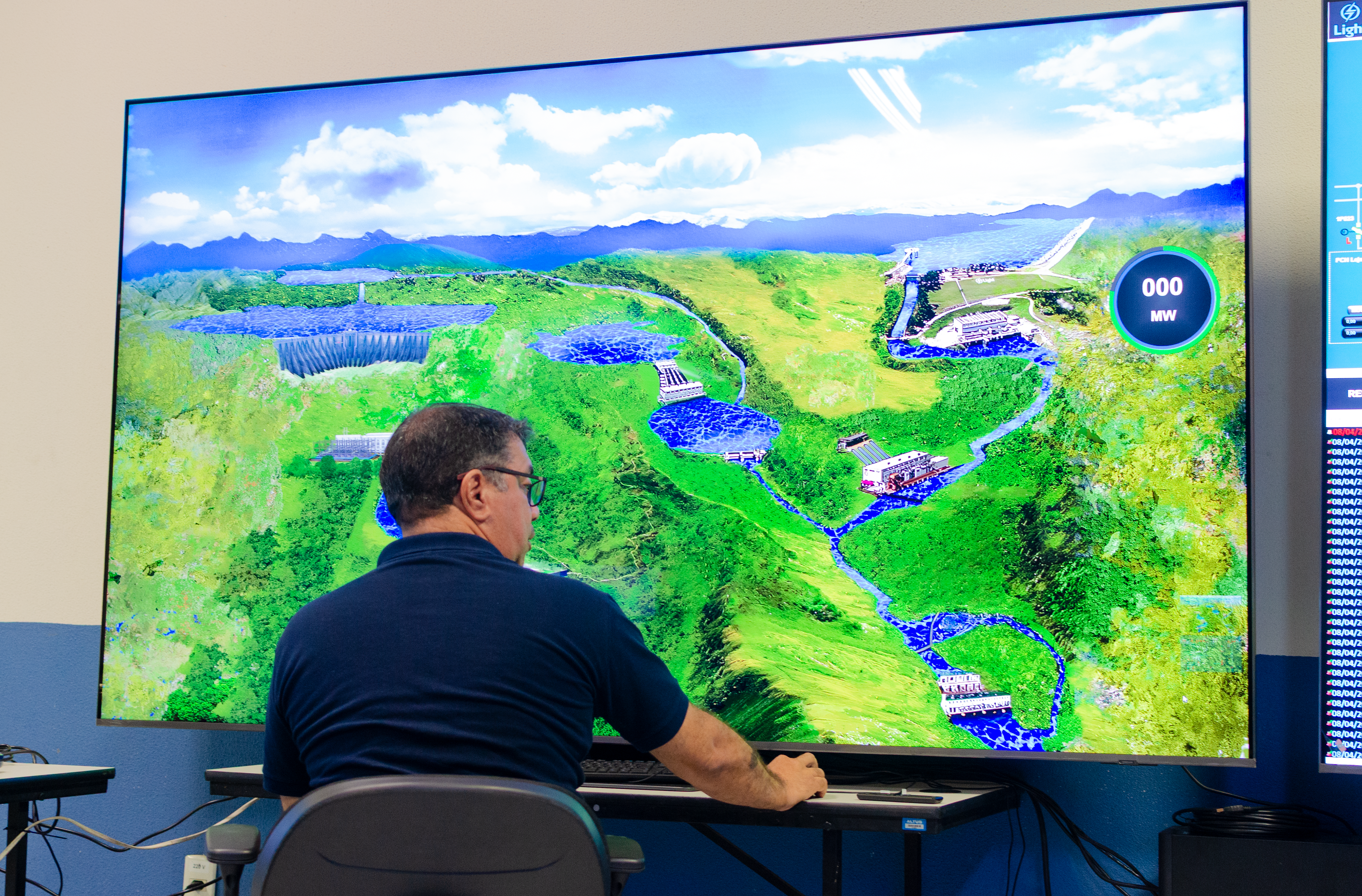
Operational safety was also enhanced. The systems come with smart alarms and interlocks, designed to prevent dangerous actions and sequences. This protects both operators and equipment, improving workplace safety. This direct impact on people, which is often not as valued, shows that the partnership's benefits go beyond technical or financial gains.
Another major reason for the success of this partnership is that Altus has always met Light's rigorous demand for 99.9% annual availability for automation equipment. In the energy sector, where even a few minutes of downtime can cause major losses and grid instability, achieving this availability mark (less than 9 hours of unplanned downtime per year) is proof that the systems are extremely reliable. This directly shows that energy production is at its maximum and the risk of problems is minimal. Thus, Light's operations align with the principles of today's smart grids.
Reliable hardware and exceptional support for critical operations
The long-lasting success of the partnership has always been attributed to Altus' strengths. The ruggedness and reliability of the Xtorm controllers were very important and always praised points. Just as important, or even more so, was Altus' easily accessible service and technical support. This reinforces the advantage of our 100% national support, ensuring quick responses, effective problem-solving, and a deep understanding of what happens in our clients' operations and day-to-day life. For engineers who manage critical infrastructures, a technological product is only as good as the support that comes with it; without quick and expert support, even the best equipment can become a problem.
The joint work between the technical teams of Light and Altus was exemplary and highly effective, being a pillar of the continuous success of this partnership. The collaboration was marked by mutual learning. Altus gained invaluable insights and knowledge about the assets, techniques, and technologies of the energy sector. At the same time, Light Energy also learned a lot.
This exchange of knowledge contributed significantly to a better understanding of the demands involved, facilitating the creation of specific and customized solutions aligned with operational needs. The success in the implementation of each project can be directly attributed to the good communication and flexibility demonstrated by both parties of this partnership, evidencing an adaptable, transparent, and cooperative spirit that allowed the teams to overcome complex challenges and achieve strategic objectives.
An important indicator of the partnership's strength and the quality of the implemented solutions is the finding that “there has been no report from Light regarding major crises or serious problems,” a fact that clearly evidences the effectiveness of the collaborative approach adopted to prevent or resolve potential problems before they escalate. The professionals at Light Energy rate this partnership as “excellent,” especially highlighting their trust in the equipment and projects developed by Altus, further reinforcing the credibility and success of this cooperation.
“The differentiators were numerous: first, reliability; then comes the technology and the partnership, especially the after-sales support, which, for us, is a major differentiator. When we are modernizing a piece of equipment, we need a very good partnership with the supplier. So, for us at Light, the after-sales support having this good relationship with the client is a key differentiator,” highlighted Sandro Constant, Light's senior automation engineer
Future perspectives for tomorrow's energy
The partnership between Altus and Light Energy shows that it remains strong and is growing, reaffirming its viability. A concrete and confirmed project is the renovation of the Lajes SHP. This project, which is expected to begin in the coming months, will involve adapting new servers and equipment for the plant. The confirmation of this project clearly evidences Light Energy's continuous satisfaction and the trust placed in Altus, demonstrating a successful case of partnership in industrial automation and the management of critical infrastructures.
As seen throughout this article, the journey, which began with addressing equipment obsolescence and the need for localized control, culminated in highly efficient, reliable, and remotely managed systems, capable of achieving an impressive 99.9% availability.
Thus, Altus established itself as a company capable of delivering complete and high-availability automation solutions, tailor-made for essential service infrastructures. This success story not only shows the technical and operational excellence that was achieved, but also serves as an inspiration for other companies facing similar modernization challenges. Altus and Light Energy show that seeking innovation and having a strategic partnership are crucial for long-term reliable operations.
